Liposuction in Thailand
Search and Compare the Best Clinics and Doctors at the Lowest Prices for Liposuction in Thailand
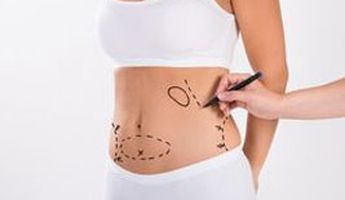
Find the best clinics for Liposuction in Thailand
With Medijump you can browse 77 facilities offering Liposuction procedures in Thailand. The cheapest price available is $358 in Khon Kaen. And for the cheapest price globally, prices start from $120 in Ukraine.
Liposuction in Khon Kaen
Price: $ 358
Liposuction in Nonthaburi
Price: $ 528
Ukraine offers the best prices Worldwide
Price: $ 120
From 89 verified reviews
Lucia Moreno, 12 March 2024
The gastric sleeve surgery has been a major turning point in my health journey. The care team at Sikarin and my medi travel was incredibly supportive throughout the whole thing. As scary as it was traveling to bangkok from australia, they all made me feel safe and answered all my questions to put my mind at ease
From 63 verified reviews
Carissa Taylor, 31 October 2022
I recently visited Bangpakok 9 International Hospital and I was very impressed. The staff was friendly and professional. The location was convenient and the facilities were modern and well-maintained. Overall, I had a great experience and would highly recommend this hospital.
From 20 verified reviews
Kinley Dorjee, 20 December 2022
Newly opened hospital with great services for chronic diseases. Hospital provides IVF and IVN
From 50 verified reviews
Sofia Martinez, 02 March 2024
Thrilled with the results and the care provided by the hospital staff. dr Dr. Tanongsak wa amazing, he really cared about the end result i wanted
From 48 verified reviews
Sana Khan, 05 March 2024
Our experience with IVF at Bangkok Hospital Bangkok was great and they made it clear what our expectations should be from the beginning. The fertility specialists and staff provided us with personalized care and support throughout. Their tech is really advanced, we hadnt seen some of this stuff in Aus and we have no doubt this contributed to our successful treatment. We are now expecting our first child and are so grateful to everyone at the hospital for making our dream of becoming parents a reality.
From 34 verified reviews
Bailey Green, 22 November 2027
I recently had a chin augmentation procedure at Bangkok Plastic Surgery and it was a great experience. The location was also convenient and easy to find I'm very pleased with the results and I would highly recommend them.
From 8 verified reviews
Mianns Chan, 20 July 2020
Im very satisfied with my Eyebag removal and Double eyelids stitching. Thank you very much to the professional Dr Hwong and nurse . So professional and kind! Thumbs up 👍
From 6 verified reviews
FFFaFiat, 30 January 2023
The hospital is very nice, clean and gorgeous. All staff is so kind and serve with smile. Ms.Yok,sales, took very good care of me. So impressive!
From 17 verified reviews
Pei Ling Lim, 25 November 2022
I had a great experience at Bangkok Hospital Samui. The facility was excellent and the staff was very friendly and helpful. The healthcare planning was very organized and professional. I was very impressed with the level of care and attention I received. Highly recommend this hospital.
From 5 verified reviews
Athena, 01 August 2024
I had my breast augmentation at DBN Infertility Clinic and couldn't be happier with the results. The staff was incredibly supportive throughout the entire process.
From 2 verified reviews
See Hoe, 06 March 2024
I could not be happier than this, I had a liposuction here and was very impressed with the results and their team. The doctor is very skilled and open. They are amazing!
From 2 verified reviews
Damie Gonzales, 02 February 2023
Dr. Sarut did an amazing job! I did lots of research before coming here and upon meeting him, he took a lot of time to explain each step and made me calm, gave me confidence. I love the way I look, Thank you Dr. Sarut!
From 2 verified reviews
Edna Mcintosh, 08 April 2023
Highly recommend this clinic for liposuction. I have lost about 2-3 inches on my tummy and it was beyond my expectations. I can’t thank them enough!
From 2 verified reviews
Erica Beard, 05 March 2024
I highly recommend Wansiri Hospital. The staff are friendly and professional, and the facility is state-of-the-art. The surgeons are exceptionally skilled. I had an eyelid procedure and am very impressed with the results.
From 2 verified reviews
Felecia Huber, 26 August 2023
The doctor was professional and explained everything clearly. The staff were super helpful and caring. Highly recommend.
From 2 verified reviews
Nicole Potts, 07 April 2024
I couldn't be happier with the exceptional care I received. The team took the time to explain the procedure in detail and made sure I understood all the post-op instructions. The clinic is conveniently located and boasts a beautiful, spotless environment. Highly recommend!
From 1 verified reviews
Leona Cheng, 22 November 2023
Very friendly staff and great service. The entire process was quick, and the aftercare instructions were clearly explained to me. I would definitely recommend them.
From 1 verified reviews
Polly Leow, 01 May 2024
Dr. Fern is very skilled and her staff is friendly and attentive. I highly recommend this clinic for liposuction. Even though I'm from overseas and had limited time they made everything go smoothly for me ❤❤❤.
From 1 verified reviews
Susanna Bender, 18 March 2023
I had a fantastic experience with them. They were very kind and took care of me every step of the way. The doctor was excellent and answered all my questions. Everything was the best.
From 6 verified reviews
Marie, 31 July 2024
Professional and caring staff. The tummy tuck procedure was smooth, and I’m thrilled with the outcome.
- Home
- Thailand
Compare Before & After Photos of _procedure_photos.phpLiposuction
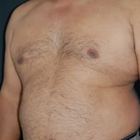
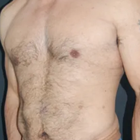
Front view
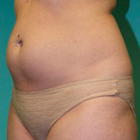
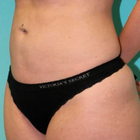
Half-side view
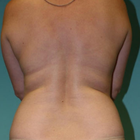
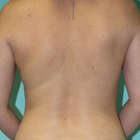
Full-side view
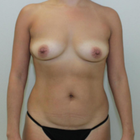
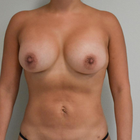
Front view
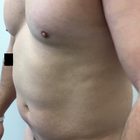
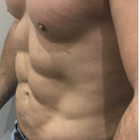
Half-side view
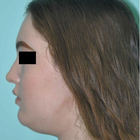
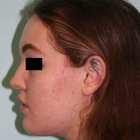
Full-side view
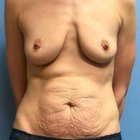
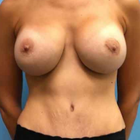
Front view
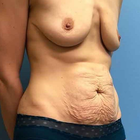
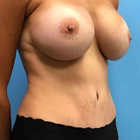
Half-side view
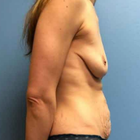
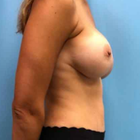
Full-side view
WHY US?
At Medijump, we're making medical easy. You can search, compare, discuss, and book your medical all in one place. We open the door to the best medical providers worldwide, saving you time and energy along the way, and it's all for FREE, no hidden fees, and no price markups guaranteed. So what are you waiting for?

Free

Best Price

Widest Selection

Risk-Free
What you need to know about Liposuction in Thailand?
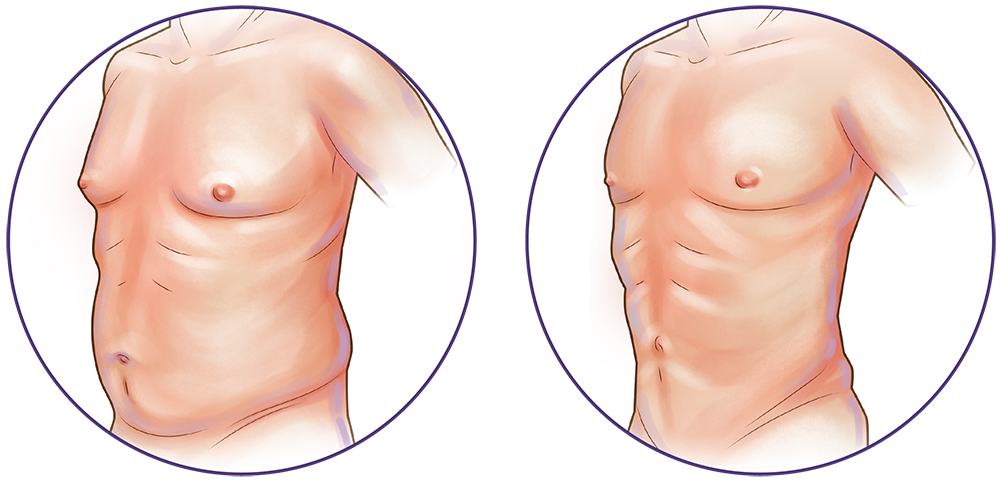
Liposuction is a cosmetic surgery that “sucks” out fat from areas that are hard to lose through a healthy diet and exercise, while liposculpture is the shaping of the skin back to its desired shape. Both are done in conjunction with one another at the same time. Most areas can be treated. Traditionally the most popular areas to treat are the stomach/abdomen, chin and neck, love handles, arms, and inner and outer thighs. Becoming more popular are the knees, calves and ankles, all with very successful results.
While liposuction can permanently remove fat cells and alter your body shape, it should not be viewed as a quick fix for individuals who are significantly overweight. The procedure works best for those who have already lost some weight themselves and are close to their ideal weight but need help tackling stubborn areas of fat in problem areas.
What is the cost of Liposuction in Thailand?
When you're thinking about liposuction in Thailand, one of the first things you probably wonder about is the cost. Here's the thing: the price isn't the same for everyone. It hinges on a few details like how many parts of your body you’re getting treated, how complex the treatment is, and the professional fee of your doctor. Costs for anaesthesia and the use of the surgical facility are also added to the bill. It's vital to remember, too, that because liposuction is often carried out for aesthetic reasons, normal health insurance might not cover it.
Can Liposuction be used as a weight-loss method?
Unwanted fats are very hard to get rid of especially if you are not a fan of exercise or diet. Liposuction, also known as Lipoplasty, liposculpture suction, lipectomy or simply lipo, basically eliminates unwanted fats by suctioning it away. Despite the growing trend of non-invasive fat reduction treatments, liposuction is still the leading procedure to remove stubborn fat cells.
Liposuction permanently removes fat cells and enhances the shape of your body. A plastic or dermatologic surgeon usually performs this type of procedure on the patient’s belly, hips, thighs, buttocks, arms, back or face to improve their shape. Furthermore, liposuction can be done together with other plastic surgeries such as facelifts, breast reductions, and tummy tucks.
This treatment procedure is particularly used for aesthetics, mainly to improve a person’s appearance. In most cases, maintaining and achieving such positive results will depend on your lifestyle.
What does a Liposuction Procedure Involve?
Before you have the treatment, a series of tests are required to ensure if you are fit for the surgery. You will also need to sign a consent form to confirm that you are fully aware of the risks, benefits and possible alternatives to the procedure.
You will likely be put under using general anesthesia, which can last for 1 to 4 hours. An epidural can also be used for procedures on the lower part of the body, although this is becoming increasingly unpopular now. Alternatively, you may be given local anesthesia if the procedure will be on small areas of your body. You may be asked to stand up during the procedure to ensure proper fat removal, but you will not feel any pain.
Tiny incisions will be made in the areas of interest through which a cannula can fit. This thin tube-like device is connected to a vacuum, capable of suctioning the fat from within your body. There are a few common techniques used, including Laser-Assisted or SmartLipo, UAL (Ultrasound-Assisted Lipo) or the most popular technique, Tumescent Lipo - this involves the pre-injection of a saline solution to help separate the fat from the blood, so less blood is removed. You'll discuss the best option with your surgeon before confirming what type of Liposuction is best for you.
How Long Should I Stay in Thailand for a Liposuction Procedure?
Generally, patients who have received general anesthesia will be required to spend the night in the hospital (in-patient). Patients, who have had local anesthesia, may be able to leave the hospital on the same day.
After the operation, you will have to wear support bandages (support corset, bandages or elasticated support) whilst healing. Expect some pain, swelling and bruising during the following days and weeks. Your surgeon will prescribe medication to help control your pain and antibiotics to reduce the risk of infection. Furthermore, your stitches may be removed during your follow-up appointment with your surgeon. You should expect to stay in Thailand for about a week post-op to allow for the initial recovery and check-up appointments, which will include the removal of stitches.
What's the Recovery Time for Liposuction Procedures?
Numbness in the specific area of your body where the fat was removed is to be expected for the first couple of weeks, usually, this will improve after 6 to 8 weeks. You may also need to wait a few days before going back to work. As for your normal activities, especially exercise, you may have to wait a few weeks before resuming.
Overall, the recovery time may vary from patient to patient. In most cases, patients can return to light activities within 2 to 3 days and are also able to go back to work after two weeks. As for the results, you may see visible results after 3 to 4 weeks, however, it can take several months before you see the final outcome.
What sort of Aftercare is Required for Liposuction Procedures in Thailand?
Just like any other cosmetic surgery, following your surgeon’s aftercare instructions is vital in achieving and maintaining the best results. If the procedure was done above your waistline, you may be advised to sleep propped on pillows to have elevation on the specific area. This helps drain the fluids and prevent them from pooling. Furthermore, applying cold compress on a certain area where the procedure was performed is highly recommended, this will reduce inflammation and bruising especially during the first few days.
What's the Success Rate of Liposuction Procedures in Thailand?
Liposuction remains one of the most popular cosmetic surgeries with a success rate of 85%, offering patients the enhanced body shape they've been craving. However, just like any other surgeries, it also comes with possible risks. Complications vary and are dependent on the procedure is as well as your surgeon’s skills. Possible risks and complications include:
- Severe bruising
- Inflammation
- Blood clot forms in veins, causing inflammation and complications (Thrombophlebitis)
- Kidney or Heart problems - changes in the body's fluid levels during the procedure may cause kidney or heart problems.
- Pulmonary embolism - when fat gets into your blood vessels and travels to your lungs, eventually, blocking your lungs.
Are there Alternatives to Liposuction Procedures in Thailand?
CoolSculpting – is a fat freezing liposuction alternative. This is more suited to people who are close to their target weight but still have unwanted pockets of fat. Coolsculpting is a fat-freezing procedure that crystalizes your fat cells until they break apart painlessly.
Ultrashape - a non-invasive procedure that doesn’t require the need for anesthesia. This treatment procedure will make use of a body sculpting device that vaporizes fat cells within the targeted area with waves of ultrasound energy. Fat cells are permanently flushed out of your body, giving you a more natural-looking fat loss.
How does Liposuction differ from CoolSculpting and Vaser liposuction in terms of technique?
Liposuction vs Vaser Liposuction
Like traditional liposuction, the purpose of Vaser liposuction is to change the contours and shape of the body by removing persistent fat deposits. The word Vaser is actually an acronym for Vibration Amplification of Sound Energy at Resonance. This specialized ultrasound technology breaks down the fatty tissues using ultrasonic frequency waves, which is why it's often referred to as Ultrasonic Liposuction or Ultrasound Liposuction.
Liposuction vs CoolSculpting
CoolSculpting is the new non-invasive, freezing method used to also change the body contours and shape, however, this method does not require the use of a cannula so there is no damage to the overlying skin. Instead, it involves the controlled application of cooling localized fat deposits, which are then expelled from the body through the kidneys.
How safe is Liposuction in Thailand?
Liposuction, when performed in Thailand by a qualified and experienced plastic surgeon, is generally considered safe. The procedure has evolved significantly since its introduction, with advancements in technology and techniques contributing to its safety profile. Most liposuction procedures are performed without major complications, and patient satisfaction rates are high. However, as with any surgery, there is always an inherent risk.
It's crucial to have a detailed discussion with your surgeon regarding the safety of the procedure. The surgeon should be open about potential risks and complications, and explain how they would handle them should they arise. Factors such as your overall health, medical history and the area or the amount of fat being removed can influence the risks associated with liposuction.
What Should You Expect Before and After a Liposuction?
After your surgery, expect some swelling and discolouration in the areas where the fat was removed. To assist in healing and lessen swelling, you'll be given a snug garment to don. It is advisable to arrange for someone to take you home after the surgery and be with you for the initial day after the procedure. Though some changes will be noticeable soon after the surgery, the best results will take shape once the swelling has fully dissipated, which usually takes around 3-6 months. Regular check-ins with your surgeon are vital to ensure your recovery is progressing as expected.
As the wise saying goes, "Your waistline is your lifeline." Liposuction does remove fat cells for good, but weight gain post-procedure can cause the leftover fat cells to grow, potentially in different areas of your body. Therefore, a balanced diet and regular exercise are crucial for maintaining your new silhouette.
How Can I Prepare for Liposuction in Thailand?
Prepping for a liposuction surgery in Thailand? You've got this! Here are some absolutely essential steps you should follow for a smooth and successful procedure:
- Consultation: First things first. Have an in-depth consultation with your plastic surgeon. They'll assess your health status and discuss your goals. Taking this information into account, they'll provide some key instructions for you leading up to the surgery day.
- Healthy Lifestyle: In preparation for the procedure, it's of utmost importance to maintain a healthy lifestyle. Get in regular exercise. Eat balanced meals. Hydrate frequently. If you smoke, now is the time to quit. And hold off on alcohol. Your body will be on the fast track to healing, thanks to these healthy habits.
- Follow Instructions: Your surgeon will give you a set of preoperative instructions. Avoiding certain medications or supplements might be on the list. Stick to these guidelines religiously.
- Support Person: And lastly, on surgery day, make sure to have a trusted friend or relative by your side. Once the procedure is completed, you'll need a safe ride back home.
Whilst the information presented here has been accurately sourced and verified by a medical professional for its accuracy, it is still advised to consult with your doctor before pursuing a medical treatment at one of the listed medical providers
No Time?
Tell us what you're looking for and we'll reachout to the top clinics all at once
Enquire Now

Similar Procedures in Thailand
Prices Start From $31

Prices Start From $120

Prices Start From $120

Prices Start From $120

Prices Start From $120

Prices Start From $31

Prices Start From $120

Popular Procedures in Thailand
Prices Start From $111

Prices Start From $931

Prices Start From $76

Prices Start From $236

Recommended Medical Centers in Thailand for Liposuction

- Interpreter services
- Translation service
- Religious facilities
- Medical records transfer
- Medical travel insurance
- Health insurance coordination
- TV in the room
- Safe in the room
- Phone in the room
- Private rooms for patients available

- Interpreter services
- Translation service
- Religious facilities
- Medical records transfer
- Medical travel insurance
- Health insurance coordination
- TV in the room
- Safe in the room
- Phone in the room
- Private rooms for patients available

- Interpreter services
- Translation service
- Religious facilities
- Medical records transfer
- Medical travel insurance
- Health insurance coordination
- TV in the room
- Safe in the room
- Phone in the room
- Private rooms for patients available

- Interpreter services
- Translation service
- Religious facilities
- Medical records transfer
- Medical travel insurance
- Health insurance coordination
- TV in the room
- Safe in the room
- Phone in the room
- Private rooms for patients available

- Interpreter services
- Translation service
- Religious facilities
- Medical records transfer
- Medical travel insurance
- Health insurance coordination
- TV in the room
- Safe in the room
- Phone in the room
- Private rooms for patients available

- Interpreter services
- Translation service
- Religious facilities
- Medical records transfer
- Medical travel insurance
- Health insurance coordination
- TV in the room
- Safe in the room
- Phone in the room
- Private rooms for patients available

- Interpreter services
- Translation service
- Religious facilities
- Medical records transfer
- Medical travel insurance
- Health insurance coordination
- TV in the room
- Safe in the room
- Phone in the room
- Private rooms for patients available

- Interpreter services
- Translation service
- Religious facilities
- Medical records transfer
- Medical travel insurance
- Health insurance coordination
- TV in the room
- Safe in the room
- Phone in the room
- Private rooms for patients available

- Interpreter services
- Translation service
- Religious facilities
- Medical records transfer
- Medical travel insurance
- Health insurance coordination
- TV in the room
- Safe in the room
- Phone in the room
- Private rooms for patients available

- Interpreter services
- Translation service
- Religious facilities
- Medical records transfer
- Medical travel insurance
- Health insurance coordination
- TV in the room
- Safe in the room
- Phone in the room
- Private rooms for patients available
Liposuction in and around Thailand
About Thailand
Thailand is consistently voted one of the most popular travel destinations in the world, leading the way for Asian countries with over 60 state-of-the-art JCI-accredited facilities. The country is renowned for its tropical beaches, floating markets, stunning royal palaces, and Buddhist temples. The vibrant capital, Bangkok, blends tradition and modernity with its ultramodern cityscape featuring brand-new high-rise condominiums side-by-side with quiet, serene canalside communities. As per the Tourism Authority of Thailand, Phuket, Koh Samui, Chiang Mai, Hua Hin, and Pattaya are the most sought-after tourist spots outside Bangkok, each boasting excellent yacht chartering opportunities.
Each year, Thailand opens its doors to hundreds of thousands of medical tourists. These individuals traverse the globe to receive treatment, with a significant number hailing from the local SE Asia region, Australia, the United States, and the Middle East. Recently, there has been an upsurge in the number of visitors coming in from China for medical purposes.
The reasons for Thailand's popularity as a medical tourism destination are its outstanding private healthcare system, attractive tropical climate, and competitive pricing. In the list of top medical tourism destinations worldwide, Thailand currently holds the third position. The procedures that attract most patients are cosmetic surgeries, including breast augmentations, gender reassignment surgery, and CoolSculpting, along with cardiac surgery, orthopedics, and urology.
Popular Parts of Thailand
Thailand, with a population of just under 70 million people spread over an area of around 500,000 square kilometers, has several regions and cities that are widely popular with both natives and tourists. Offering a diverse blend of urban and rural experiences, beach life and inland natural beauty, each part of Thailand offers a unique angle into the rich and complex Thai culture.
Arguably the most popular area of Thailand is the capital city, Bangkok. Consistently ranked as one of the most visited cities in the world, Bangkok is an ever-buzzing urban hub with its busy streets, modern lifestyle, magnificent temples and opulent palace, alongside a pulsating nightlife. This city is typically the entry gateway for a vast majority of the 30 million tourists who visit Thailand each year. Known for its glimmering cityscape and vibrant food scene, Bangkok is indeed a compulsory stop in every traveler's itinerary.
While Bangkok is the country's urban heart, there's more to Thailand than just its capital. Among the other popular regions are the beachside island paradise of Phuket and Koh Samui, the city of Pattaya, and Hua Hin - each of them a haven for beach lovers and anyone seeking a laid-back vibe away from bustling city life. However, for those who prefer the call of the inland and a dash of adventure, Chiang Mai, nestled in the lush jungles of northern Thailand offers a refreshing and unique proposition with its derivative local culture, serene temples and interaction with native wildlife.
Weather and Climate in Thailand
Known for its truly tropical climate and scorching temperatures, Thailand, in general, is hot and humid all year round. The coastal locations do benefit from the cooling sea breeze, a luxury urban Bangkok is denied. Average temperatures range from 28°C (82°F) up to 35°C (95°F). However, during the Hot Season (March to June), temperatures can top 40°C (104°F).
The infamous Rainy Season tends to start in July and continue through to October; during this time expect heavy rainfall, often amounting to flooding in some areas. It will remain warm to hot but humidity levels will rise and the mosquitos will come out to play!
November to February is often referred to as the Cool Season when less rain is expected and the temperatures tend not to rise above 35°C (95°F).
From a tourist perspective; the High Season lasts from November to March and the Low Season from April to October. But be aware of the Shoulder Seasons of April to June and September to October, when Thailand is less impacted by the Rainy Season and less busy with tourists – these can be the ideal times to visit.
In a nutshell, Thailand is a Shorts and T-shirt Country, you’re never really going to be cold, so pack light; shorts, t-shirts, vests, skirts, singlets, and light dresses. Maybe pack jeans and shoes if you’re planning on going to a swanky roof-top bar in Bangkok or to a temple where flip-flops are not acceptable.
Don’t forget mosquito spray as the little pests can get everywhere; big ones and little ones! Always protect against the sun; with high factor sunscreen and UV-protective sunglasses. The usual medications found at home should be available in most pharmacies.
Getting around in Thailand
With the Suvarnabhumi International Airport being serviced by some of the world’s major airlines, tourists can fly into Thailand from almost anywhere in the world, sometimes with a connection along the way. All the popular regions have their own international airports, with the exception of Pattaya, which is just a 90-minute taxi ride from Bangkok. However, arrival destinations are slightly limited outside of Bangkok, but the likes of Emirates and Qatar Airways will fly into Phuket International Airport. The rest, mostly fly in from local countries on budget airlines, including Scoot, SilkAir, AirAsia, and Lion Air to name a few.
For domestic flights, the airports are nicely linked in Thailand with flights from as little as $45 USD one way. There are several budget airlines servicing these routes, including Thai Lion Air, AirAsia, Nok Air, Thai Airways, Bangkok Airways, and Thai Smile.
The train allows for even cheaper travel within Thailand and is far more comfortable than spending hours sitting on a bus. Bangkok has the BTS, or Skytrain, which allows for fast transfer from the airport into the city. Given the traffic in central Bangkok, the BTS offers a great alternative to being stuck in traffic jams.
Taxis are great, however, be sure to confirm the price before you begin your journey or better still, insist the ride goes on the meter – that is how you guarantee the cheapest and fairest price. But expect traffic in the city and any built-up areas.
Tourist Visas in Thailand
Before you travel to Thailand, it is important to stay updated with the latest visa requirements. While a number of countries are eligible for visa-free entry, the rules can sometimes shift, making it essential to verify before you travel.
If you are travelling from countries like the United Kingdom, the United States, Germany, Australia, Singapore, Canada, France, Italy, Japan, New Zealand, and South Korea can enjoy a stay of up to 30 days in Thailand without needing a visa. On the other hand, if you are visiting from China, India, Myanmar, Laos, Cambodia, Bhutan, Nepal, Bangladesh, Sri Lanka, Pakistan, and Uzbekistan, you will be granted the facility of a visa on arrival.
To get a visa on arrival here are the requirements:
1. You need to have a valid passport with at least 6 months of remaining validity.
2: You would need to show proof of a round-trip ticket within 30 days and confirmation of your accommodation for the first night in Thailand.
3. You need to demonstrate that you have sufficient funds for your visit, which is 10,000 THB per person or 20,000 THB per family.
Don't forget to carry a recent passport-sized photograph. The fee for a visa on arrival is 2,000 THB, and you can pay it via cash or credit card.
For more information, click here.
Additional Information
- The Thai Baht (THB) is the local currency. 1 USD is approximately around 34.5559 on average as of 2023.
- ATMs are readily available across Thailand and accept virtually all major bank cards (Visa, Mastercard). Credit card payment is accepted in most established restaurants and outlets, with the more local food vendors, for example, only accepting cash.
- Thai is the local language but due to the extremely well-established tourism industry in Thailand, English is spoken by most locals who work with tourists, and often signs will have an English translation.
- Buddhism is the primary religion in Thailand, with a large Muslim population in the south. The Royal Family is deeply revered throughout the country and should never be disrespected.
- There are many public holidays in Thailand, which aren’t always on the same day each year, including Songkran (Thai New Year), which is celebrated in mid-April, Labor Day, and Coronation Day in early May, Asanha Buja in July and Constitution Day in December.
Popular Searches
- Plastic Surgery in Thailand
- Dental Implants in Thailand
- Hair Transplant in Thailand
- Breast Augmentation Thailand
- Gastric Sleeve in Thailand
- Gender Reassignment Surgery in Thailand
- Laser Hair Removal in Bangkok
- Botox in Bangkok
- Dermatology in Bangkok
- Breast Augmentation in Bangkok
- Coolsculpting in Bangkok
- Veneers in Turkey
- Hair Transplant in Turkey
- Rhinoplasty in Turkey
- Stem Cell Therapy in Mexico
- Rhinoplasty in Mexico
- Liposuction in Mexico
- Coolsculpting in Tijuana
- Rhinoplasty in Korea
- Scar Removal in Korea
- Gastric Sleeve in Turkey
- Bone Marrow Transplant in India
- Invisalign in Malaysia
- Plastic Surgery in the Dominican Republic
- Tummy Tuck in the Dominican Republic
- Plastic and Cosmetic Surgery in Poland
- Rhinoplasty in Poland
- Hair Implant in Poland
- Dental Implants in Poland
- IVF in Turkey



















